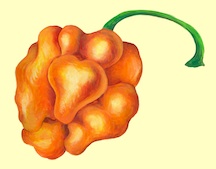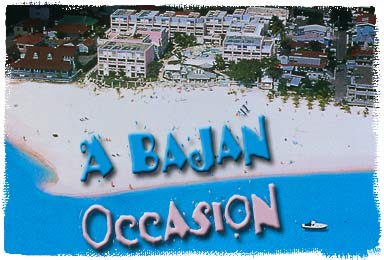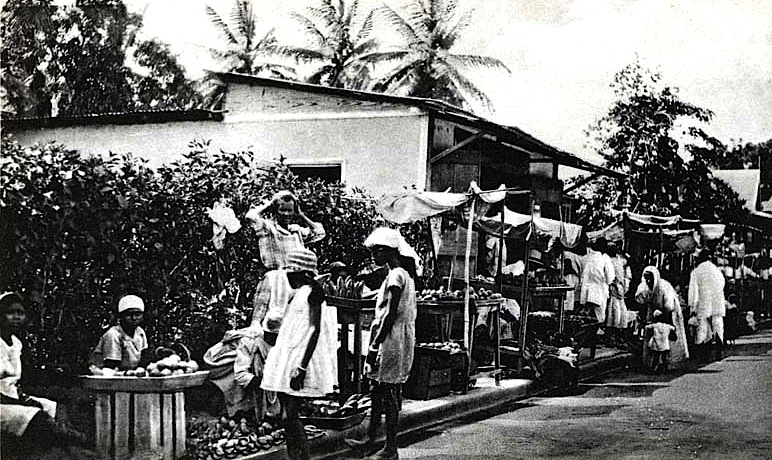By Dave DeWitt
The Bonney pepper is to Barbados what the Scotch bonnet is to Jamaica and the Congo pepper is to Trinidad & Tobago. Its earliest mention in literature is from 1647, when Richard Ligon described it while writing his book, A True and Exact History of the Island of Barbados, which was not published until 1657. No early painting of a Bonney pepper exists, but the first illustration of a pod of the Chinense species appeared in a botanical featuring insect pests on various fruits in Guyana that was illustrated by Merian Sibylla in 1719, and re-created by Lois Manno in gouache on paper, at left.
In his description of “red pepper,” Ligon writes: “There is of this kind two sorts; the one so like a child’s Coral, as not to be discerned at the distance of two paces; a crimson and scarlet mixed, the fruit about two inches long, and shines more than polished coral.” Then he describes what can only be a Chinense, and probably is the original Bonney: “The other of the same color, and glistering as much, but shaped like a large Button of a Cloak; both of one and the same quality; both so violently strong, as when we break the skin, it sends out such a vapor into our Lungs, as we fall all a Coughing, which lasts a quarter of an hour after the fruit is removed; but as long as we are garbling [selecting] it, we never give over.” What he means is that the pod’s vapor is not apparent during the handling, but only after it is cut open. My wife and I experienced this sort of vapor attack in Port of Spain, Trinidad, when we cut open a Congo pepper in our hotel room.
Ligon continues his little pepper essay: “This Spice the Spaniards love, and will have it in all their meat, that they intend to have piquant, for a greater Hough goe [strong flavor] is not in the world. Garlick is faint and cool [when compared] to it. It grows on a little shrub no bigger than a Gooseberry [kiwi] bush.”
For a story on the Bonney pepper 350 years later, see my article here.







